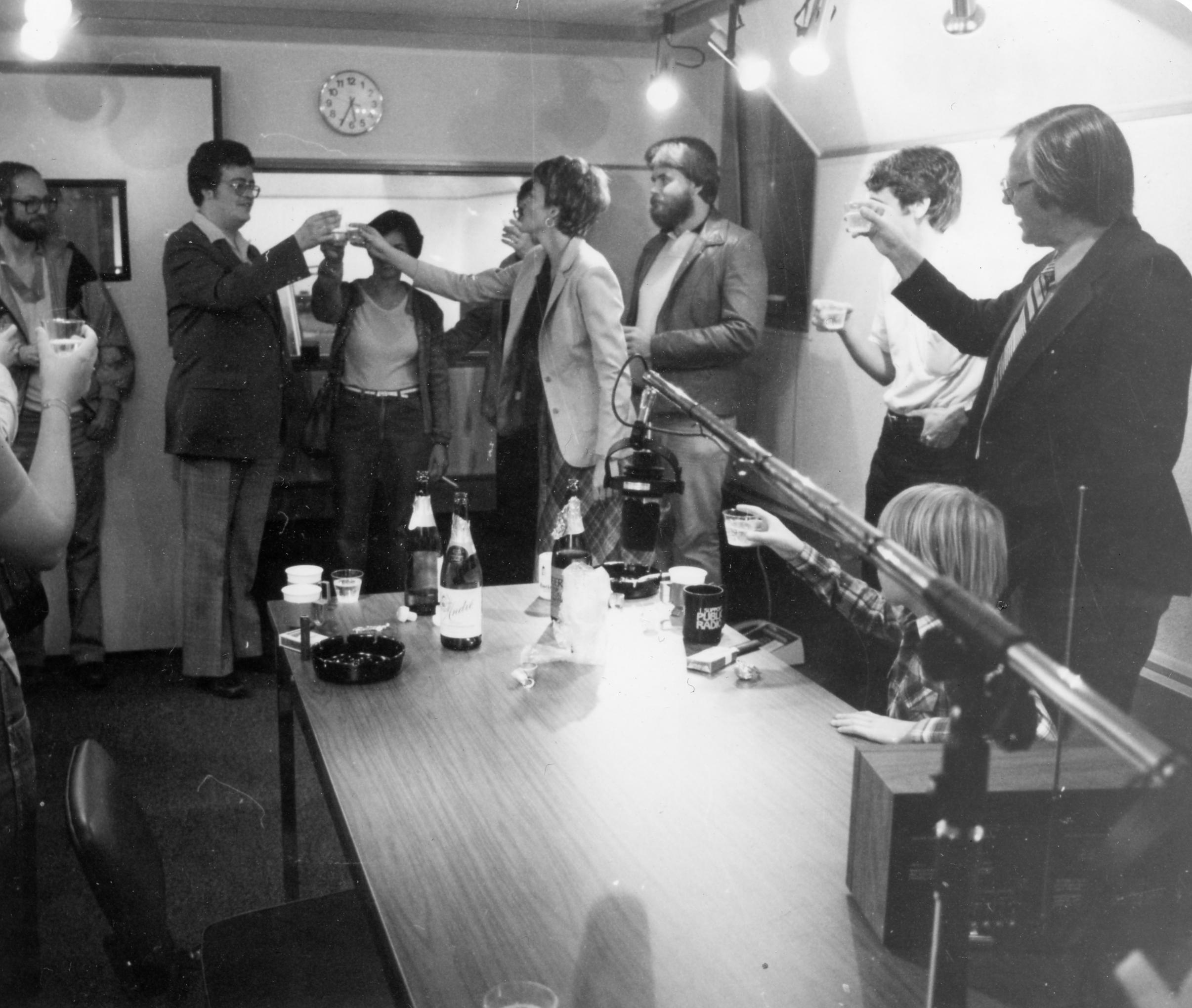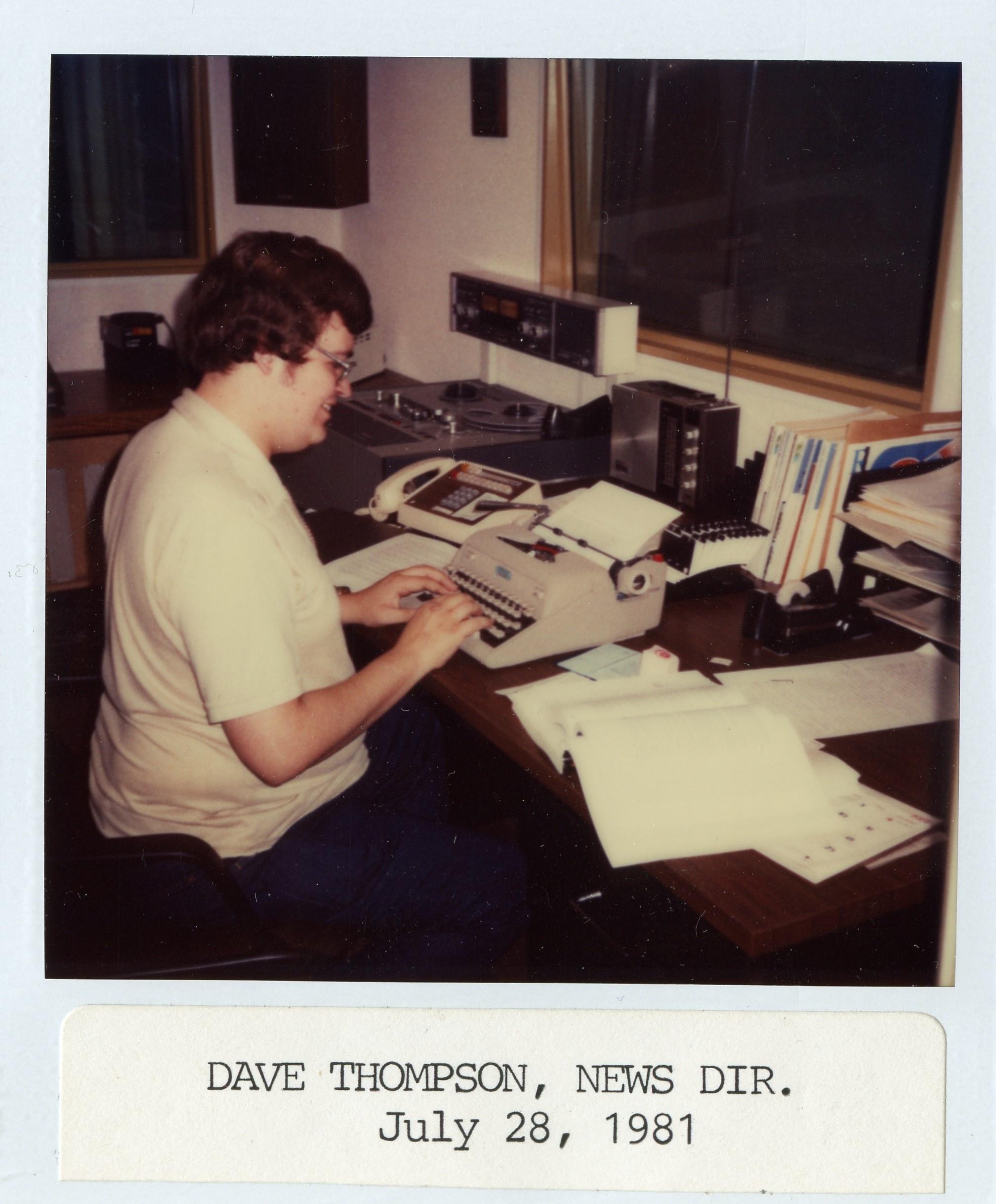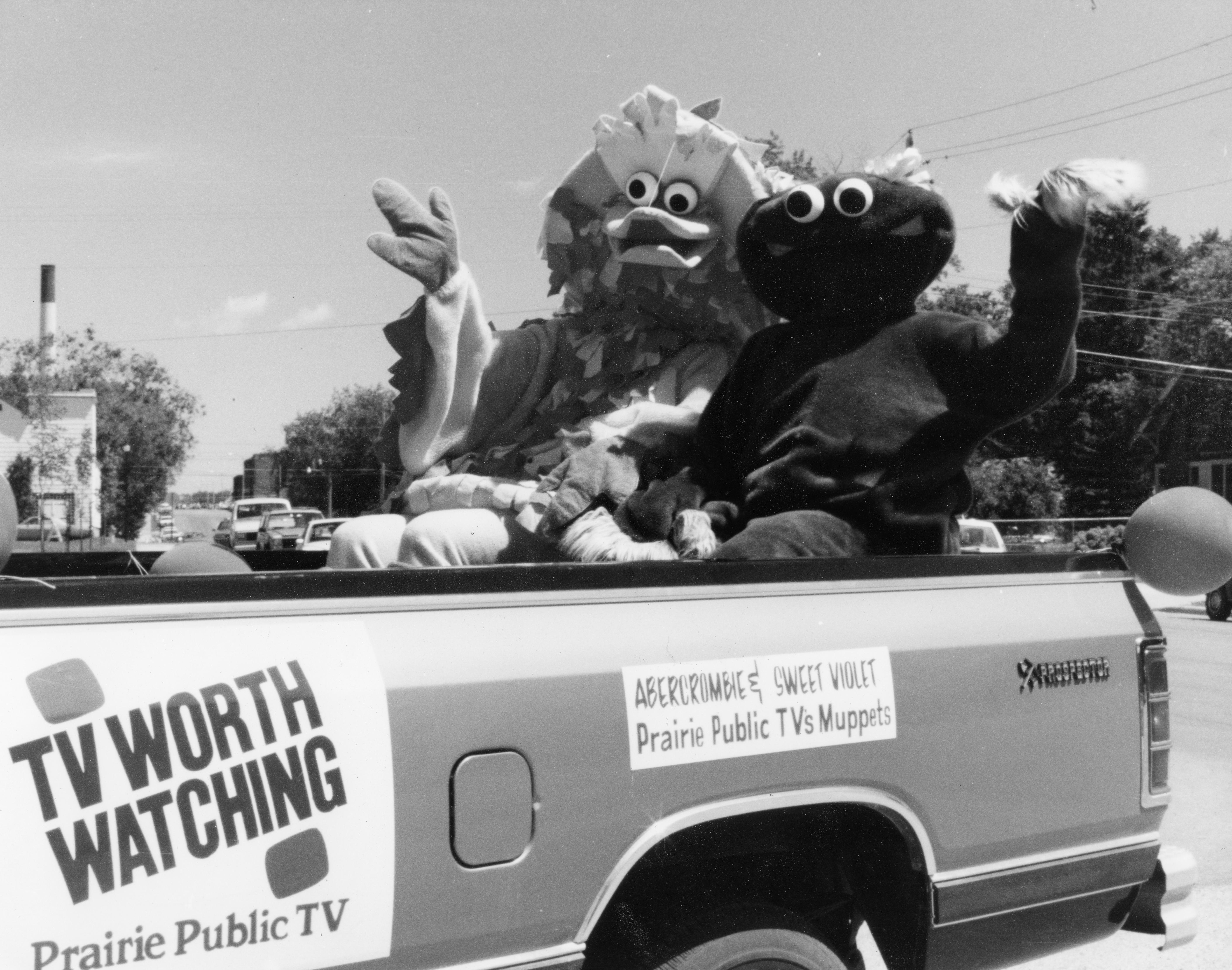
1980
Prairie Public introduced a weekly series, North Dakota This Week, featuring journalists from across the state.
KSRE-TV in Minot signed on.
Saskatchewan began to receive Prairie Public via cable.
A major capital campaign was initiated to build new facilities in Fargo, to establish radio in western North Dakota, and to set up endowment fund.
Prairie Public used satellite to televise UND hockey live from Providence, Rhode Island. UND Sioux won national title as viewers in North Dakota watched.
The board approved expansion into public radio.
1981
The Fargo tower relocation was completed.
KCND-FM in Bismarck, Prairie Public Radio’s first station, signed on.
Prairie Public began gaming operations.
Prairie Public introduced a weekly series, North Dakota This Week, featuring journalists from across the state.
KSRE-TV in Minot signed on.
Saskatchewan began to receive Prairie Public via cable.
A major capital campaign was initiated to build new facilities in Fargo, to establish radio in western North Dakota, and to set up endowment fund.
Prairie Public used satellite to televise UND hockey live from Providence, Rhode Island. UND Sioux won national title as viewers in North Dakota watched.
The board approved expansion into public radio.
1981
The Fargo tower relocation was completed.
KCND-FM in Bismarck, Prairie Public Radio’s first station, signed on.
Prairie Public began gaming operations.

KCND-FM in Bismarck, Prairie Public Radio’s first station, signs on.
1982
The Reagan administration initiated major cuts in federal funds. North Dakota state support for public television was severely reduced.
KDSE-TV in Dickinson signed on.
The Dickinson Radio translator signed on.
1983
The Minot tower collapsed in a severe ice storm.
KWSE-TV in Williston signed on.
Prairie Public purchased the American Life Building in Fargo.
Minot TV returned to air.
Minot radio signed on.
1984
The corporate name was changed from Prairie Public Television to Prairie Public Broadcasting.
1985
Prairie Public moved to the American Life Building in downtown Fargo.
1986
The Canadian government rejected satellite delivery in Winnipeg after a Prairie Public lobbying effort.
Prairie Public received a major federal grant for new studio equipment.
Williston radio signed on.
The Reagan administration initiated major cuts in federal funds. North Dakota state support for public television was severely reduced.
KDSE-TV in Dickinson signed on.
The Dickinson Radio translator signed on.
1983
The Minot tower collapsed in a severe ice storm.
KWSE-TV in Williston signed on.
Prairie Public purchased the American Life Building in Fargo.
Minot TV returned to air.
Minot radio signed on.
1984
The corporate name was changed from Prairie Public Television to Prairie Public Broadcasting.
1985
Prairie Public moved to the American Life Building in downtown Fargo.
1986
The Canadian government rejected satellite delivery in Winnipeg after a Prairie Public lobbying effort.
Prairie Public received a major federal grant for new studio equipment.
Williston radio signed on.

1987
Dickinson radio signed on.
Prairie Public received the Mental Health Association’s “Media Award.”
1988
The North Dakota Telecommunications Council was formed. Dennis Falk took a major leadership role to accomplish it.
Abercrombie and Sweet Violet, Prairie Public mascots for its children’s programs, put on 5,586 miles and appeared at 29 towns and cities in a special outreach campaign funded by the Corporation for Public Broadcasting.
Prairie School Television grew to serve 60,000 students.
KDPR, Prairie Public Radio for Dickinson, signed on the air.
1989
Prairie Filmmakers, a showcase of regional filmmaking, was launched.
A new mission statement was adopted: The mission of Prairie Public Broadcasting is to provide for the people of its viewing and listening area an indispensable radio and television programming service that educates, entertains, informs, and enlightens.
Prairie Public Television expanded its broadcasts to 24-hours-a-day in Fargo and Winnipeg.
Arbitron showed Prairie Public Radio attracted 15,000 listeners a week.
Prairie Public hosted its first member meeting in Winnipeg, a chance to meet and greet members and viewers in their hometown. By spring 1990, member meetings were hosted in every transmitter city in North Dakota and in Brandon. The following year, Crookston and Jamestown were added to the list.
Dickinson radio signed on.
Prairie Public received the Mental Health Association’s “Media Award.”
1988
The North Dakota Telecommunications Council was formed. Dennis Falk took a major leadership role to accomplish it.
Abercrombie and Sweet Violet, Prairie Public mascots for its children’s programs, put on 5,586 miles and appeared at 29 towns and cities in a special outreach campaign funded by the Corporation for Public Broadcasting.
Prairie School Television grew to serve 60,000 students.
KDPR, Prairie Public Radio for Dickinson, signed on the air.
1989
Prairie Filmmakers, a showcase of regional filmmaking, was launched.
A new mission statement was adopted: The mission of Prairie Public Broadcasting is to provide for the people of its viewing and listening area an indispensable radio and television programming service that educates, entertains, informs, and enlightens.
Prairie Public Television expanded its broadcasts to 24-hours-a-day in Fargo and Winnipeg.
Arbitron showed Prairie Public Radio attracted 15,000 listeners a week.
Prairie Public hosted its first member meeting in Winnipeg, a chance to meet and greet members and viewers in their hometown. By spring 1990, member meetings were hosted in every transmitter city in North Dakota and in Brandon. The following year, Crookston and Jamestown were added to the list.

Abercrombie and Sweet Violet